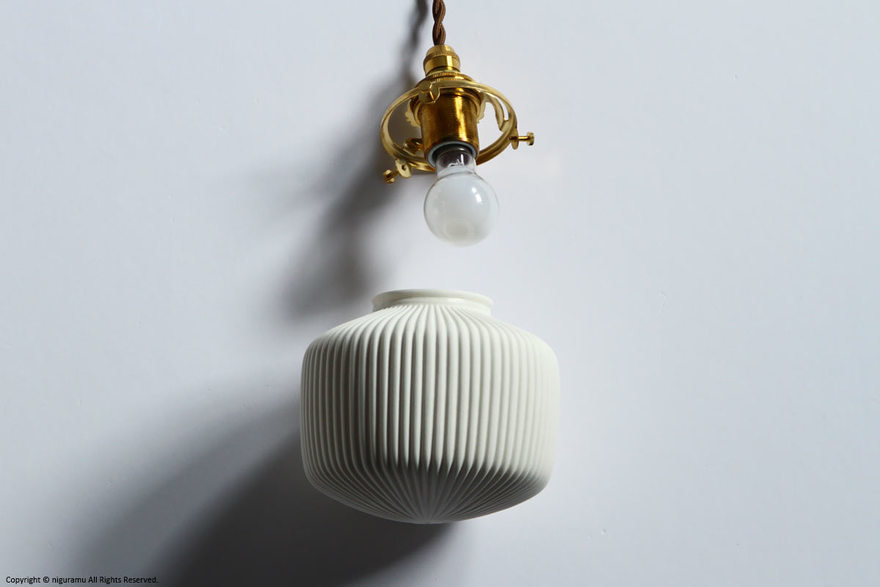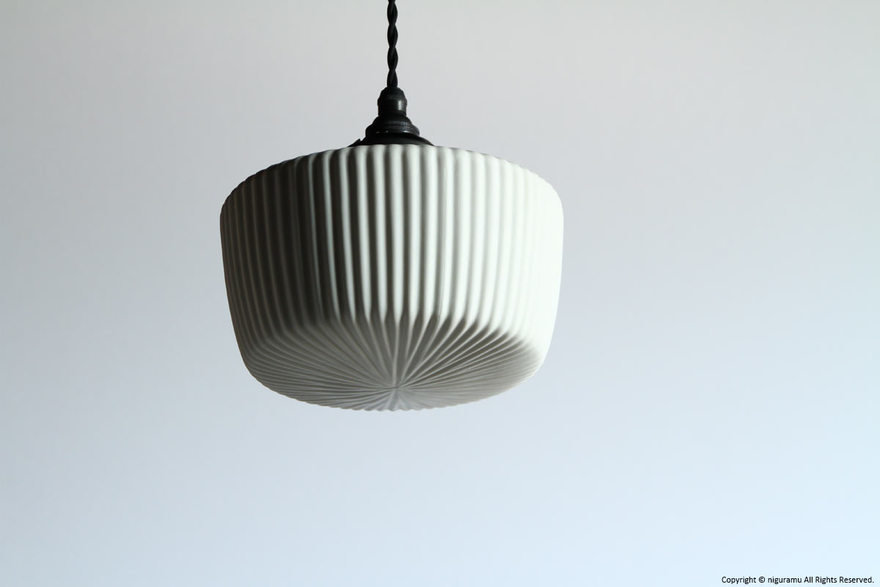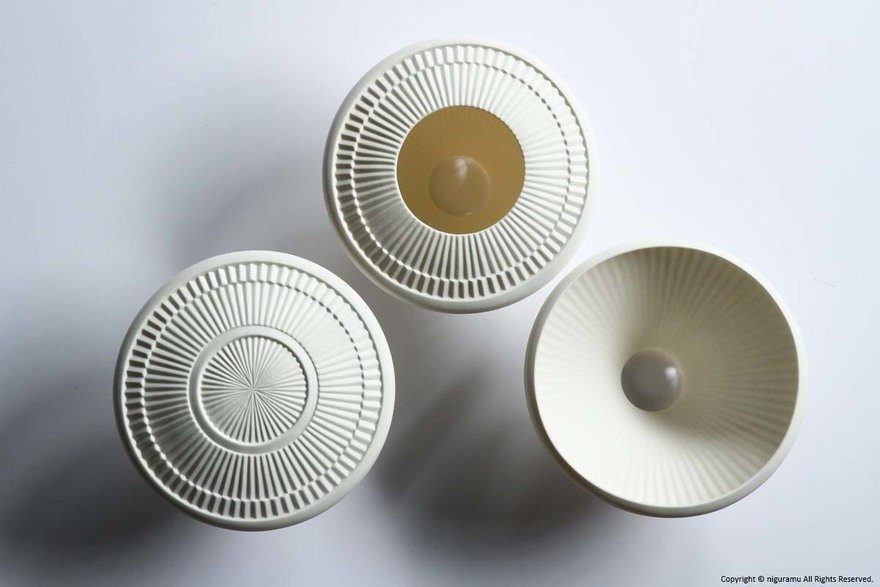These Seemingly Paper Lampshades are Made from Porcelain Clay
Star status like Shinogi
Slip casting is a production method used to make ceramic vessels from a plaster mold. The "slip" refers to a slurry of clay and water that is mixed to a precise viscosity. This is poured into the plaster mold for, say, a vase. Although a vase is hollow, there is no need for a mold core; what happens is the plaster actually absorbs some of the water, leaving the clay sticking to the mold walls. After a predetermined amount of time, the fabricator will pour the slip out of the mold. What's left is the clay sticking to the mold and voila, you've got your vase.
And in hand-fabricating ceramics, there's a Japanese technique called Shinogi whereby the artisan carves precise grooves around the circumference of an object with rotational symmetry prior to firing it. It's a tricky business, but ceramicist Hirotaka Tobimatsu has refined his Shinogi skills to a high level. By carving, Shinogi-style, into a slip casting mold (I assume; the translation is getting a little muddy), he produces these impossibly detailed Cylinder Fin lampshades that look like paper, but are in fact porcelain clay:
(All images: Niguramu)








He also produces this Cone Accordion line:












Just stunning.
The lamps are sold under his Tobimatsu Toki brand and carried by retailer Niguramu.
-
oFavorite This
-
QComment
K
{Welcome
Create a Core77 Account
Already have an account? Sign In
By creating a Core77 account you confirm that you accept the Terms of Use
K
Reset Password
Please enter your email and we will send an email to reset your password.

